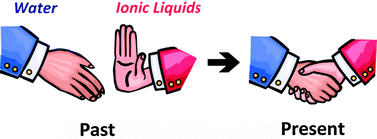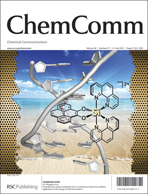Ionic liquid/water mixtures: from hostility to conciliation†
Abstract
Water was originally inimical to ionic liquids (ILs) especially in the analysis of their detailed properties. Various data on the properties of ILs indicate that there are two ways to design functions of ionic liquids. The first is to change the structure of component ions, to provide “task-specific ILs”. The second is to mix ILs with other components, such as other ILs, organic solvents or water. Mixing makes it easy to control the properties of the solution. In this strategy, water is now a very important partner. Below, we summarise our recent results on the properties of IL/water mixtures. Stable phase separation is an effective method in some separation processes. Conversely, a dynamic phase change between a homogeneous mixture and separation of phases is important in many fields. Analysis of the relation between phase behaviour and the hydration state of the component ions indicates that the pattern of phase separation is governed by the hydrophilicity of the ions. Sufficiently hydrophilic ions yielded ILs that are miscible with water, and hydrophobic ions gave stable phase separation with water. ILs composed of hydrophobic but hydrated ions undergo a dynamic phase change between a homogeneous mixture and separate phases according to temperature. ILs having more than seven water molecules per ion pair undergo this phase transition. These dynamic phase changes are considered, with some examples, and application is made to the separation of water-soluble proteins.

- This article is part of the themed collection: Ionic Liquids

 Please wait while we load your content...
Please wait while we load your content...